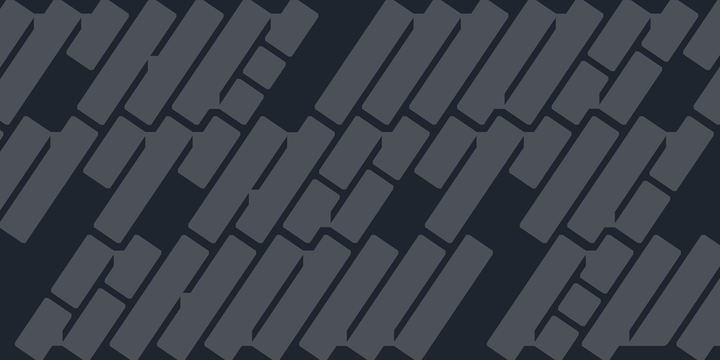
Kihim in a single-weight display typeface. It is grid-based design – and a very decorative one at that. All of its letterforms are set on an extreme angle. The ‘tops’ and ‘bottoms’ of each stroke reflect that angle, giving the typeface a ‘rotalic’ feeling, as if each letterform was rotated clockwise. Designed by Hitesh Malaviya, Kilhim is his interpretations of the late artist Nasreen Mohamedi’s drawings and photographs. Through the interplay of light and shadows, her work explored the creation and consumption of form. It featured highly structured grids, just like this typeface. Her work achieved a unique level of abstraction, in which simple marks caused grids to form and deform. In her photography, she concentrated on sparseness and shapes. Physical space occupied by the body was a point of departure for her. Beyond the body, there was the urban fabric of the city: the spaces created by walls, windows and intervals in architectural structures, through which people pass. Her almost mathematical placement of lines indicated a sophisticated handling of formal/aesthetic relations on the picture plane, and she carefully weighed the intervals between lines, releasing them onto the page with a rhythmic flow that alluded to musical notation. A lot of intriguing glyph repositioning happens with text set in Kihim, once OpenType features like ‘Contextual Alternates’ are activated. The font also has oldstyle figures as an optional OpenType feature, which is really quite an opulent extra for such an ornamental display typeface. With Kihim’s abstract letterforms and its use of diagonal lines, Malaviya pays homage to the rhythmic quality of Mohamedi’s oeuvre. Often, text in Kihim seems illegible or unrecognisable at first, before the reader starts to see through the rhythmic pattern of thick and thin lines: then one starts to se the written word. The Kihim typeface is named after the place where Mohamedi passed away in 1990, when she was only 53.

